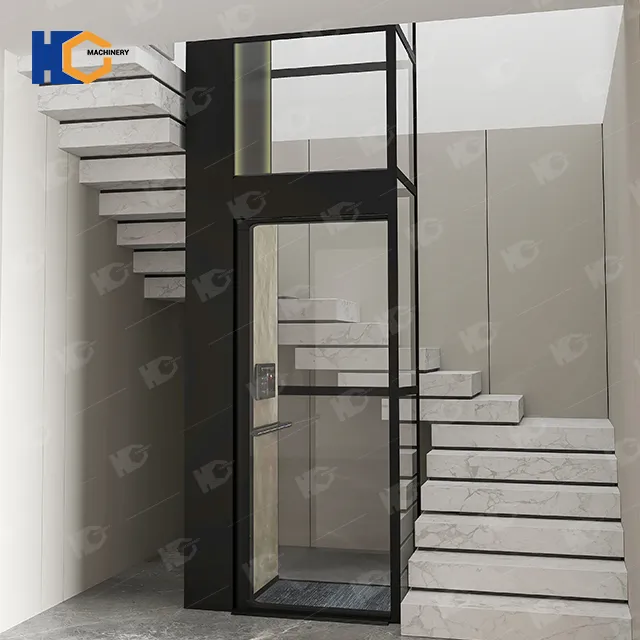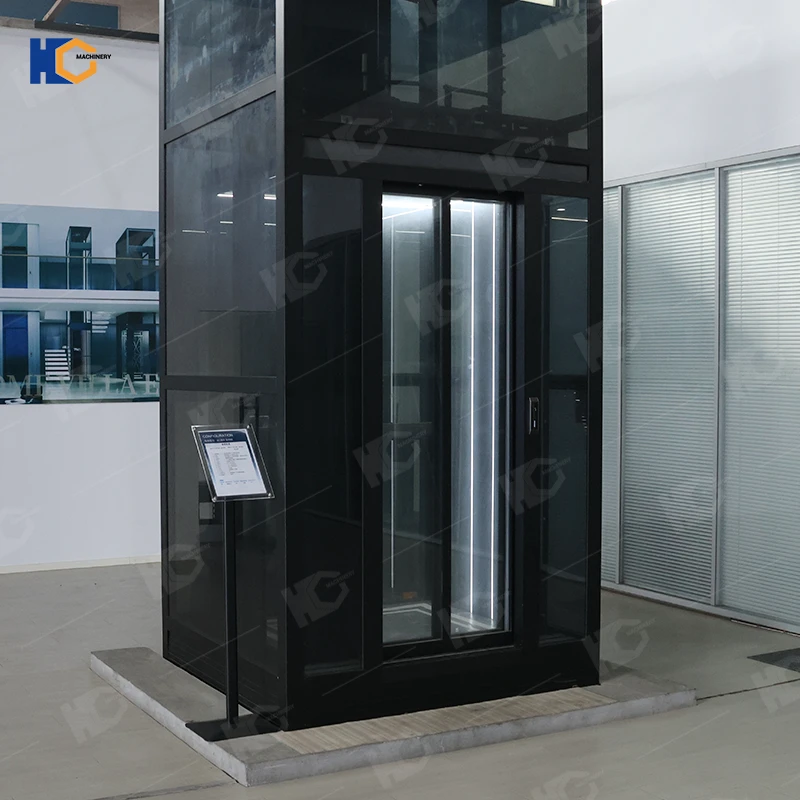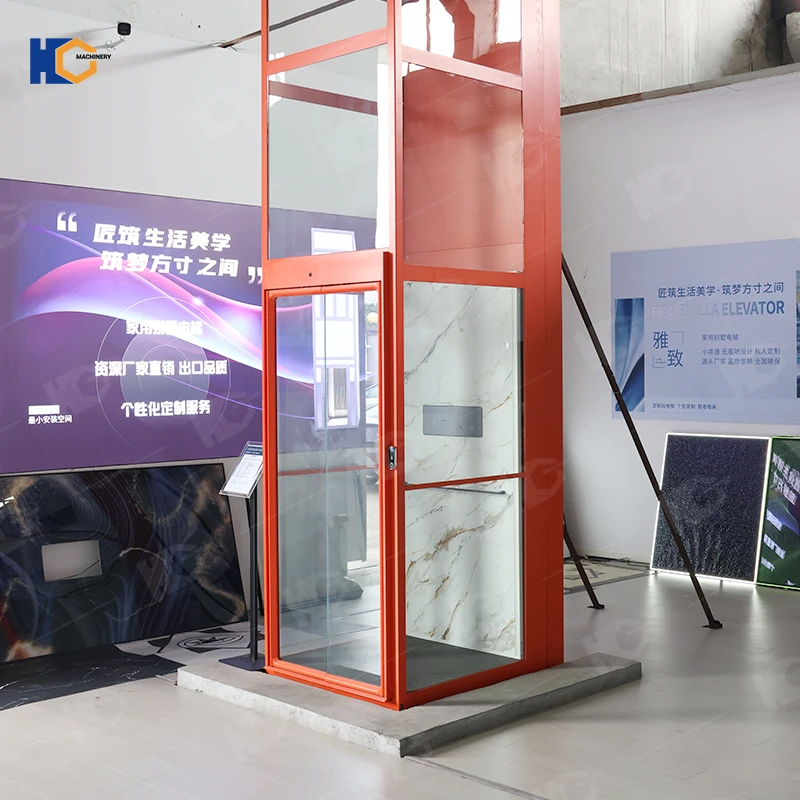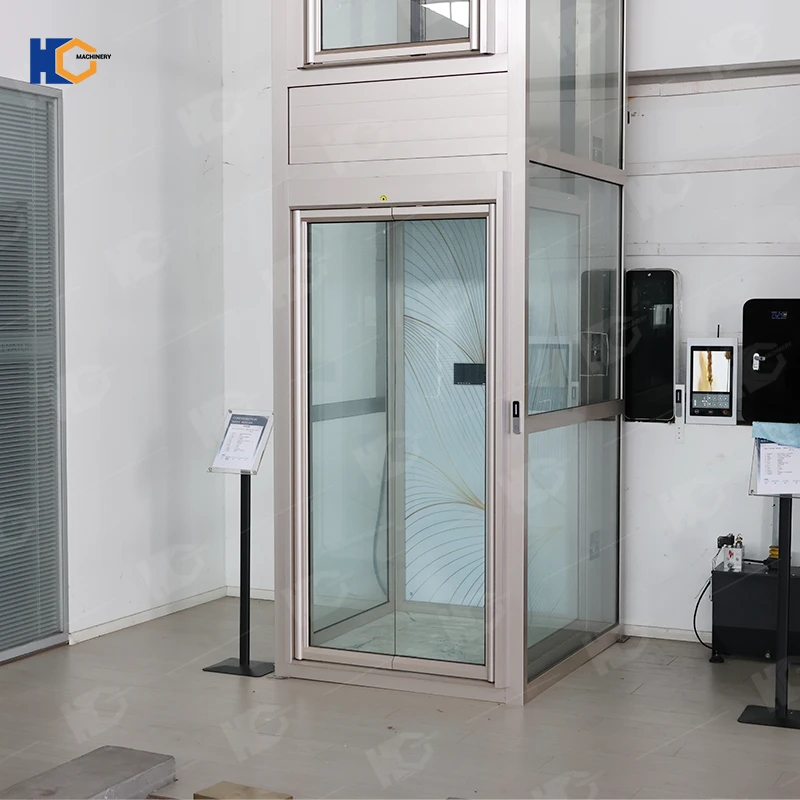In recent years, shaftless home elevators have been gaining traction as an alternative to traditional residential elevators. They are compact, easier to install, and can provide a sense of independence for homeowners with mobility challenges. However, the decision to invest in a shaftless elevator should not be taken lightly. From the financial outlay to space requirements and potential resale value, there are several crucial factors to weigh. In this article, we will explore the pros and cons of shaftless home elevators, share real-world examples, review important data points, and suggest practical considerations for those thinking about installing one. This way, you can decide whether a shaftless elevator is the right fit for your home and lifestyle.
739772.webp)
1. What Is a Shaftless Home Elevator?
A shaftless home elevator is a compact vertical lift designed specifically for residential use. Unlike traditional home elevators, it does not require a fully enclosed shaft. Instead, it typically travels along a single rail or post, passing through an opening in the floor. The footprint is significantly smaller compared to a conventional home elevator, making it ideal for homes with space constraints or for retrofitting into existing residences with minimal structural alterations.
Key Features:
Travels between two floors (though some models can accommodate three).
Compact design, often fitting into tight corners or existing closets.
Usually comes preassembled or in modules for quicker installation.
Typically uses 110-volt or 220-volt power, depending on the model and local codes.
According to data from the Home Elevator & Lift Institute (HELI), shaftless home elevators have witnessed an average annual growth rate of about 12% in new installations between 2018 and 2024, highlighting the increasing demand from homeowners looking for alternatives to more extensive elevator systems.
2. Pros of Shaftless Home Elevators
2.1 Space-Efficient Design
One of the most appealing features of shaftless elevators is their minimal footprint. Traditional elevators require a full shaft, a machine room, and extra overhead clearance. By contrast, a shaftless model needs just enough space for a platform and a travel passage through the floor. This reduction in structural requirements can be particularly helpful for homeowners whose spaces might not allow for a large elevator or who wish to minimize renovations.
Example: A couple living in a modest two-story suburban home in Minnesota decided to install a shaftless elevator to accommodate an aging parent. They converted an underused linen closet on each floor into the landing area. Because they didn’t need to construct a complete shaft, installation time was shortened, and the total construction footprint was minimal.
2.2 Reduced Construction Time and Cost
Traditional elevator installations can be time-consuming and expensive, partly because they involve building a specialized shaft, machine room, and pit. Shaftless elevators eliminate or drastically reduce these requirements, translating into lower labor costs and faster installation. In many cases, installation can be completed in one to two weeks, compared to several months for a conventional elevator.
On average, a shaftless elevator costs between $15,000 and $35,000, including the elevator unit itself and the basic installation. While still a significant sum, this is often more affordable than the $30,000–$50,000 range for a fully enclosed residential elevator.
2.3 Improved Accessibility and Independence
Installing a shaftless elevator can transform a multi-story home into a more accessible and comfortable living space. This can be particularly beneficial for older adults or anyone with mobility issues, allowing them to remain in their homes longer and avoid the disruption of moving to a single-story residence or assisted living facility.
Aging-in-place is a growing trend, with the U.S. Census Bureau projecting that 20% of the population will be over 65 by 2030. In light of these statistics, having a shaftless home elevator can be a practical solution for safe, comfortable living across multiple floors.
2.4 Versatility in Design
Shaftless elevators come in various styles and finishes, ranging from sleek, modern glass capsules to more traditional enclosed cabs with wood paneling. This versatility allows homeowners to match the elevator design to their interior décor. Some homeowners even use translucent materials to make the elevator visually unobtrusive, blending seamlessly into the existing architecture.
3. Cons of Shaftless Home Elevators
3.1 Limited Travel Distance and Capacity
Most shaftless elevators are designed to travel only between two floors, although some models can manage a third floor. This limitation may not be suitable for larger homes with multiple levels. Additionally, shaftless elevators generally have smaller weight capacities compared to standard residential elevators. If you need to transport heavy furniture, medical equipment, or multiple individuals at once, a shaftless elevator might prove insufficient.
Example: A homeowner in Florida wanted to move bulky items such as large boxes and a hospital bed to the second floor. They found that a typical shaftless elevator model, with a capacity of around 350–500 pounds, was not enough for their needs. They had to opt for a more traditional elevator system with a higher weight capacity of around 800–1,000 pounds.
3.2 Safety and Code Compliance
While shaftless home elevators are generally safe when installed correctly, they do raise some code-compliance issues. Without a fully enclosed shaft, there is a higher chance of accidental contact with the cab while it is moving. Modern models are equipped with safety sensors, gates, and locks, yet local building regulations can vary. If your jurisdiction has stringent codes for residential elevators, you may need to invest in additional safety features, leading to extra costs.
It is crucial to work with a reputable installer experienced in local building codes. Some homeowners have encountered bureaucratic delays or had to purchase extra safety mechanisms, such as full-height doors or an interlock system that prevents the elevator from moving when the door is open.
3.3 Noise and Vibration
Because shaftless elevators typically operate without a fully enclosed shaft, noise and vibration can be more noticeable. The hum of the motor or the slight shaking as the elevator ascends and descends can become an annoyance over time. Although many manufacturers have improved their noise-dampening technology, homeowners should ask for demonstrations or visit showrooms to experience the operational noise firsthand before making a purchase.
3.4 Potential Impact on Home Resale Value
The impact of any home modification on resale value can be tricky to predict. While a home elevator can be a selling point for potential buyers who value accessibility, it may not appeal to everyone. Furthermore, some buyers might view the elevator as an eyesore or worry about maintenance costs. According to a report by the National Association of Realtors, niche additions like home elevators can recoup anywhere from 50% to 70% of their installation cost, depending on market conditions and location. Therefore, consider how long you plan to stay in your home and whether the elevator aligns with your long-term goals.
4. Practical Considerations for Potential Buyers
4.1 Evaluate Your Space and Structural Requirements
Before committing to a shaftless elevator, consult with an architect or structural engineer to ensure your home can support the required modifications. Though less invasive than a full elevator shaft, you still need to reinforce floor openings and verify that load-bearing elements are properly accounted for.
Tip: Take detailed measurements of your floor plans or invite a professional to conduct an in-home assessment. They can recommend the optimal location for installing the elevator, minimizing disruptions to your living space.
4.2 Understand Your Mobility Needs
Shaftless elevators are typically more suited for those who simply want to avoid stairs or need basic wheelchair accessibility. If you require advanced mobility solutions—like transporting large or heavy equipment—consider whether a standard home elevator with a higher weight capacity would be more appropriate.
Case in Point: A family caring for a child with a disability researched both shaftless and traditional elevators. After weighing the child’s future growth and additional mobility equipment, they chose a full residential elevator that could comfortably support a larger wheelchair, saving them from needing an upgrade later on.
4.3 Check Local Building Codes and Permit Requirements
Building codes for residential elevators vary widely from one jurisdiction to another. Some areas have strict regulations that apply even to shaftless models, while others treat them more like stairlifts. Researching these requirements in advance is essential, especially if you live in a historic district or a multi-unit building with homeowners’ association (HOA) rules.
Action Step: Visit your local building authority’s website or schedule a meeting to clarify permit requirements, inspection procedures, and any restrictions that may influence the elevator’s design or placement.
4.4 Budget for Installation and Long-Term Maintenance
While the initial cost of a shaftless elevator can be relatively modest compared to a conventional unit, budget should also include ongoing maintenance. Elevator manufacturers typically recommend annual inspections to maintain safety and efficiency. A typical maintenance plan might cost between $300 and $600 per year, depending on the model and local service rates.
In addition, factor in potential future parts replacement. A motor or drive system could cost a few thousand dollars if it fails outside the warranty period. Setting aside a contingency fund for these expenses will ensure your elevator remains reliable over its lifespan.
4.5 Plan for Aesthetics and Integration
Finally, aesthetics are more than just a vanity concern. An elevator that seamlessly blends into your interior design can enhance your living environment. Some homeowners add decorative lighting, custom panels, or even subtle glass accents. Speak with your installer about personalization options, and consider whether you want your elevator to stand out or remain inconspicuous.
5. Conclusion
A shaftless home elevator offers a practical solution for homeowners seeking improved accessibility with minimal construction. Its compact design, lower installation cost, and ability to retrofit into existing spaces make it an attractive option for aging-in-place or simply enhancing everyday convenience. However, limited travel distances, lower weight capacities, and potential noise concerns are valid drawbacks that must be carefully evaluated.
Before purchasing a shaftless elevator, consult with professionals to gauge structural feasibility, confirm local code compliance, and ensure it meets your personal mobility requirements. Weigh the potential resale value against your long-term plans and consider how the elevator will integrate into your home’s overall design. With thorough planning and a clear understanding of the pros and cons, you can make a well-informed decision and possibly add a feature that improves your daily living for years to come.



